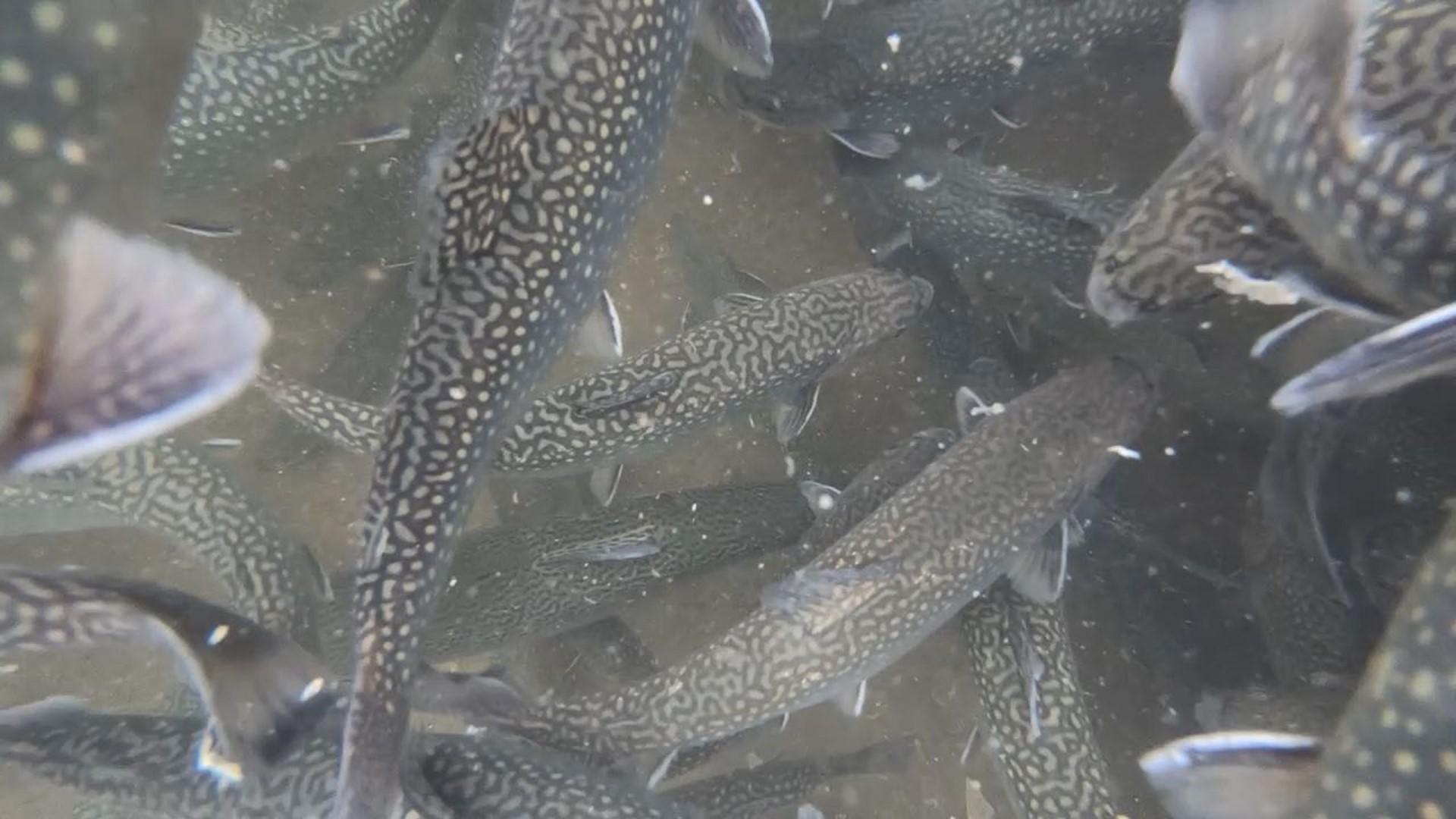PENNSYLVANIA, USA — It's the calm before the storm, as Pennsylvania is just days from the opening of yet another trout season.
“This has been hiding in plain sight for quite a long time," said James Suleski, a board of member of the Native Fish Coalition's Pennsylvania chapter.
Standing outside one of the Pennsylvania Fish & Boat Commission's fish hatcheries, Suleski explains what he says is a problem many anglers aren't aware of.
“What [the public doesn't] know and what Pennsylvania Fish & Boat hasn’t shared with them is that brown and rainbow trout that are stocked are actually ranked as some of the world’s most highly invasive species," he said.
In 2023, the Fish and Boat Commission will stock 3.2 million adult trout across our state’s lakes and streams.
Nearly 94% will be brown and rainbow trout, which are both non-native to Pennsylvania.
“This stocking does occur in other states but other states do it much more responsibly," said Suleski.
He's worried about the impact on another fish that’s known and loved here in the Keystone State.
“We have a mountain of research showing [the stocking of brown and rainbow trout] is causing the decline and disappearance of our state fish, [the] native brook trout," explained Suleski. "We know this now and the stocking continues as the brook trout declines.”
The Fish & Boat Commission refutes that non-native stocked brown and rainbow trout are invasive, saying in order to be considered as such, a species “must cause significant economic harm, environmental harm, and/or harm to human health.”
Still, Dr. Isaac Ligocki, assistant professor of biology at Millersville University, says concerns about stocked fish are valid, as the introduction of non-native species can create potential competition for food and other resources.
“There’s some evidence throughout eastern North America that brook trout do grow at a reduced rate when they’re interacting with these other species," Dr. Ligocki explained. "There’s also evidence they shift into smaller headwater streams where there is less competition with the non-native species.”
And while Dr. Ligocki’s colleague, Dr. Aaron Haines, agrees, he acknowledges there are other threats to the brook trout, which require cold, clean water to survive.
He explains that warming water temperatures, habitat degradation, and declining water quality must all be monitored too.
“Good water quality doesn’t just benefit the brook trout, it benefits native species overall and it benefits us, which is extremely important," said Dr. Haines, professor of biology at Millersville University.
The Pennsylvania Fish & Boat Commission says recreational trout fishing wouldn’t be possible without stocking in certain streams.
Its representatives say more than 85% of all stocked trout waters contain very few or no wild trout.
The state also avoids stocking wild brook trout streams which contain moderate to high-density populations of those native fish.
“There’s a tightrope they have to walk, and they’re trying to do both to some extent," said Dr. Haines.
Dr. Haines is referring to the Fish & Boat Commission’s daily balancing act—managing the public interests of anglers while simultaneously protecting wildlife.
“The key is can you be more effective maybe at both, or maybe can you be more effective at managing the native brook trout to provide sustainable angling opportunities for the people of Pennsylvania," added Dr. Haines.
The Fish & Boat Commission declined an interview with FOX43 for this story, but provided us with written answers to several questions over email, as well as additional information about the state's stocking practices.
The Commission calls protecting the native brook trout, along with other wild trout, a priority, and points to several parts of its fisheries management plan as focusing on its preservation.
They include things like addressing climate change and implementing a stocking authorization to better manage where exactly trout are being stocked statewide.
But Suleski doesn’t buy it.
“When you peel back the conservation, the thin veil of conservation window dressing, really what we’re talking about is a hatchery operation and a social program that is littering our state with invasive trout species," he said.
As for where we go from here, Dr. Haines believes it all comes down to looking for effective management strategies which both create opportunities for anglers and keep the brook trout swimming in Pennsylvania's waterways for years to come.
“That balance is key and we can do both, but we have to do it intelligently and with good research," he added.
Download the FOX43 app here.

